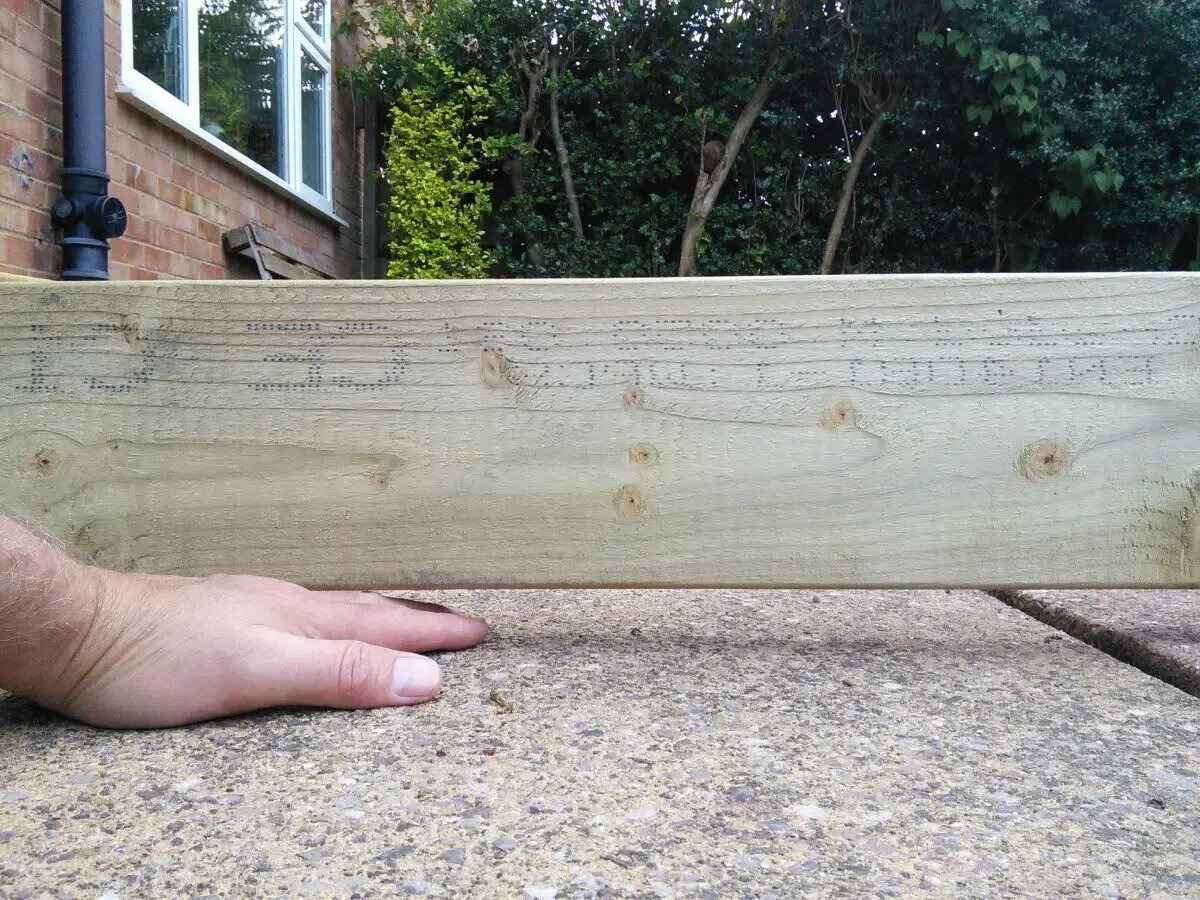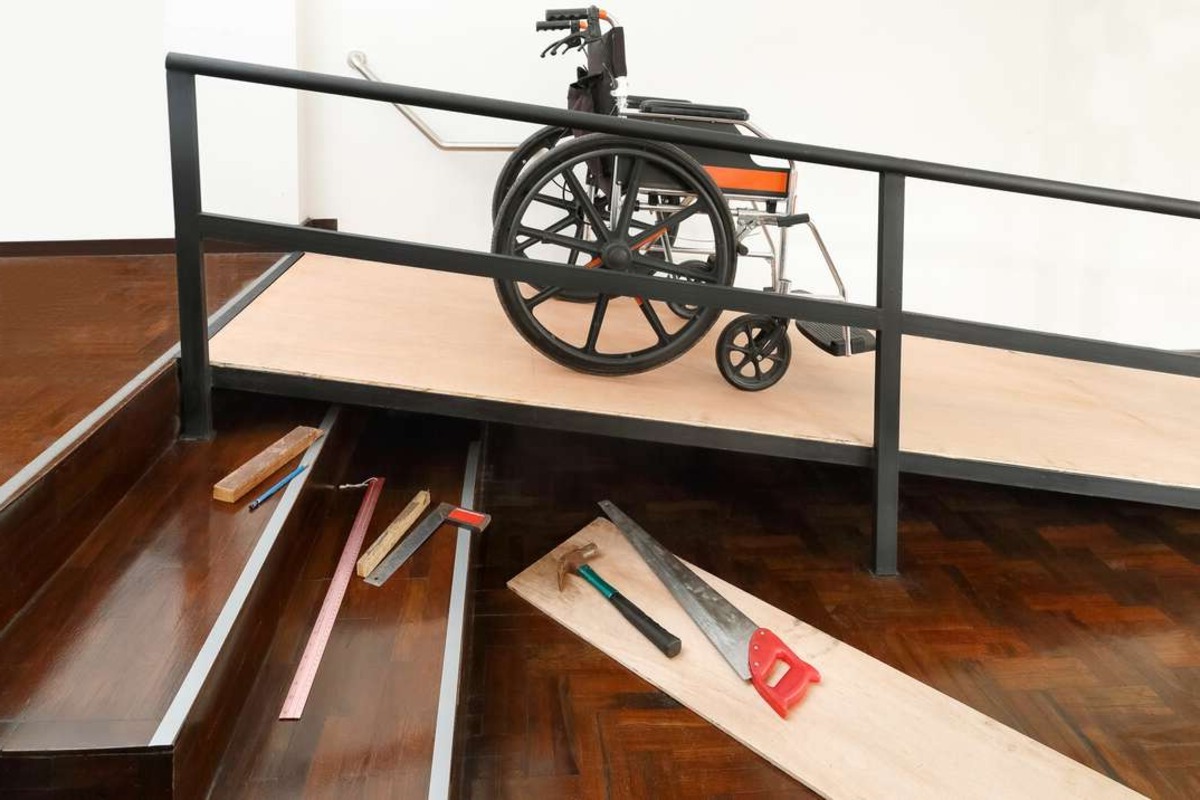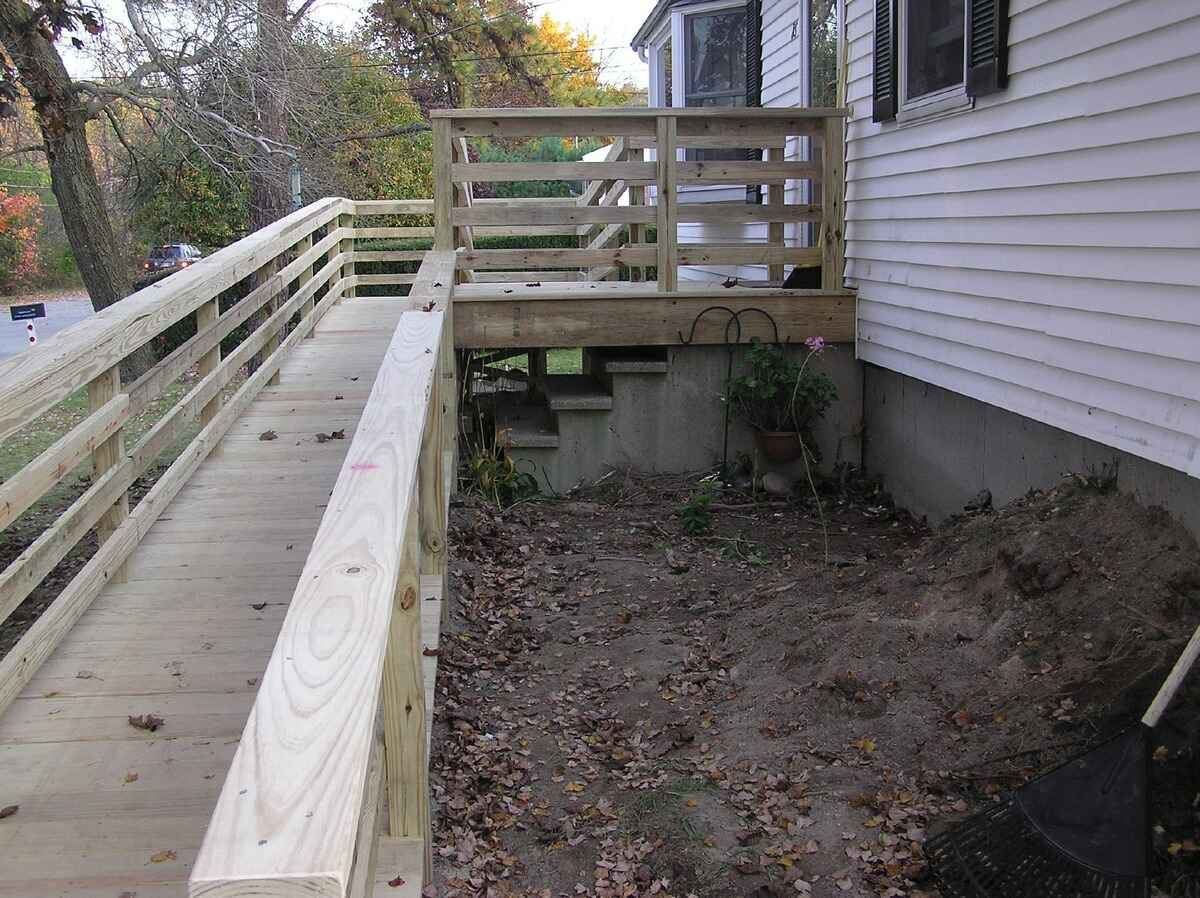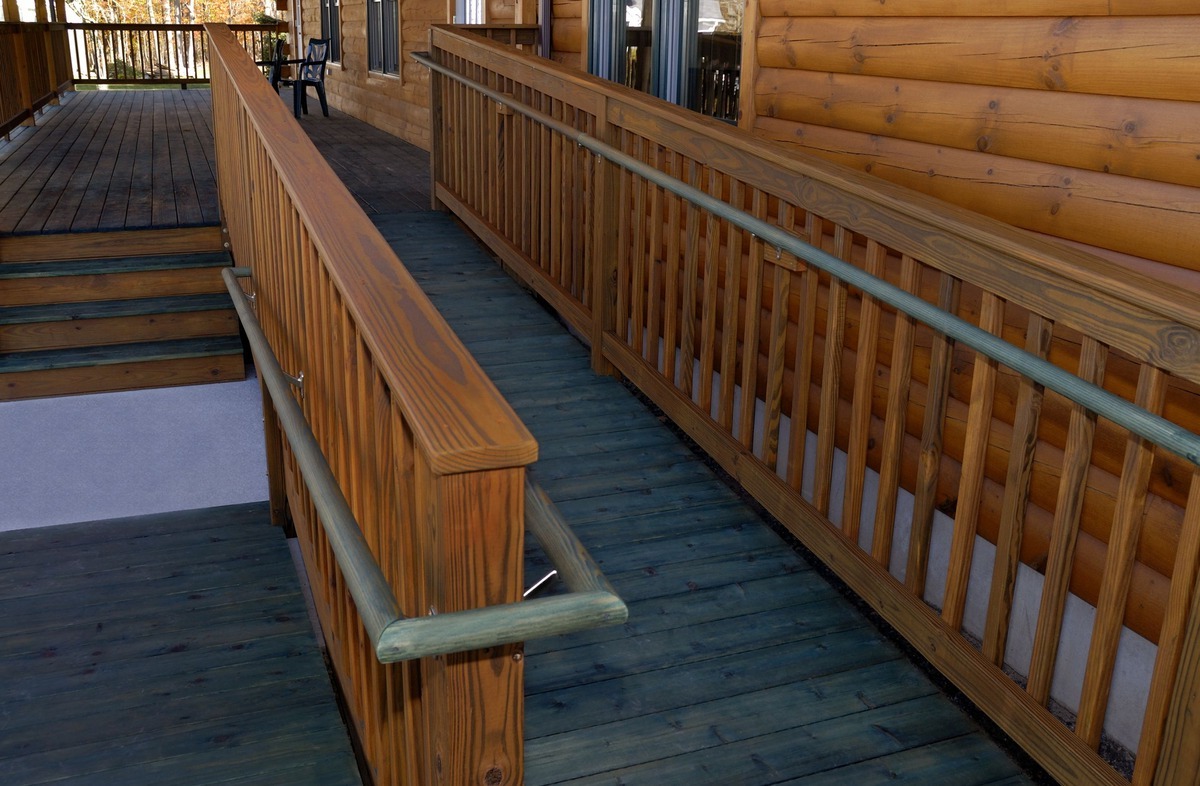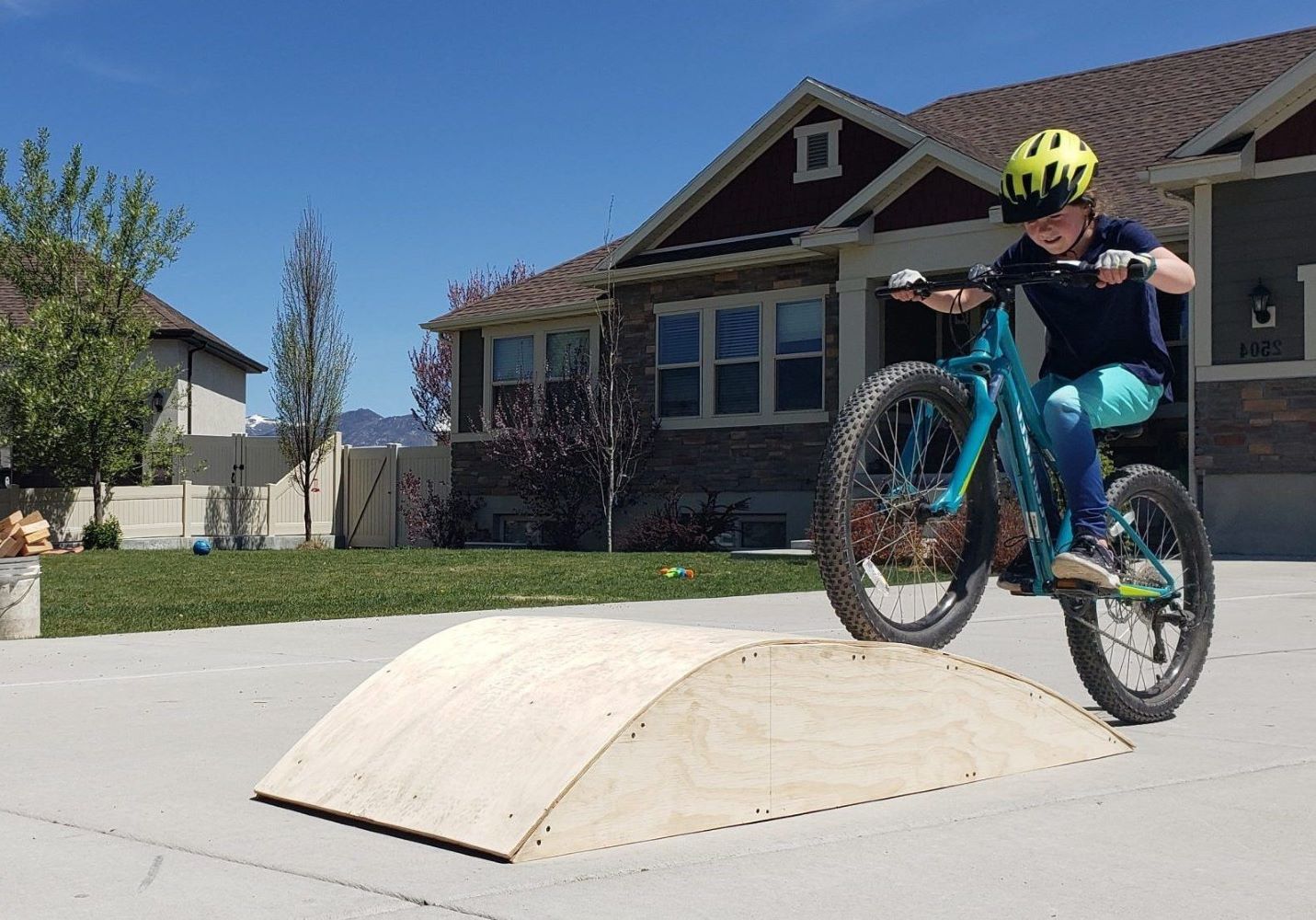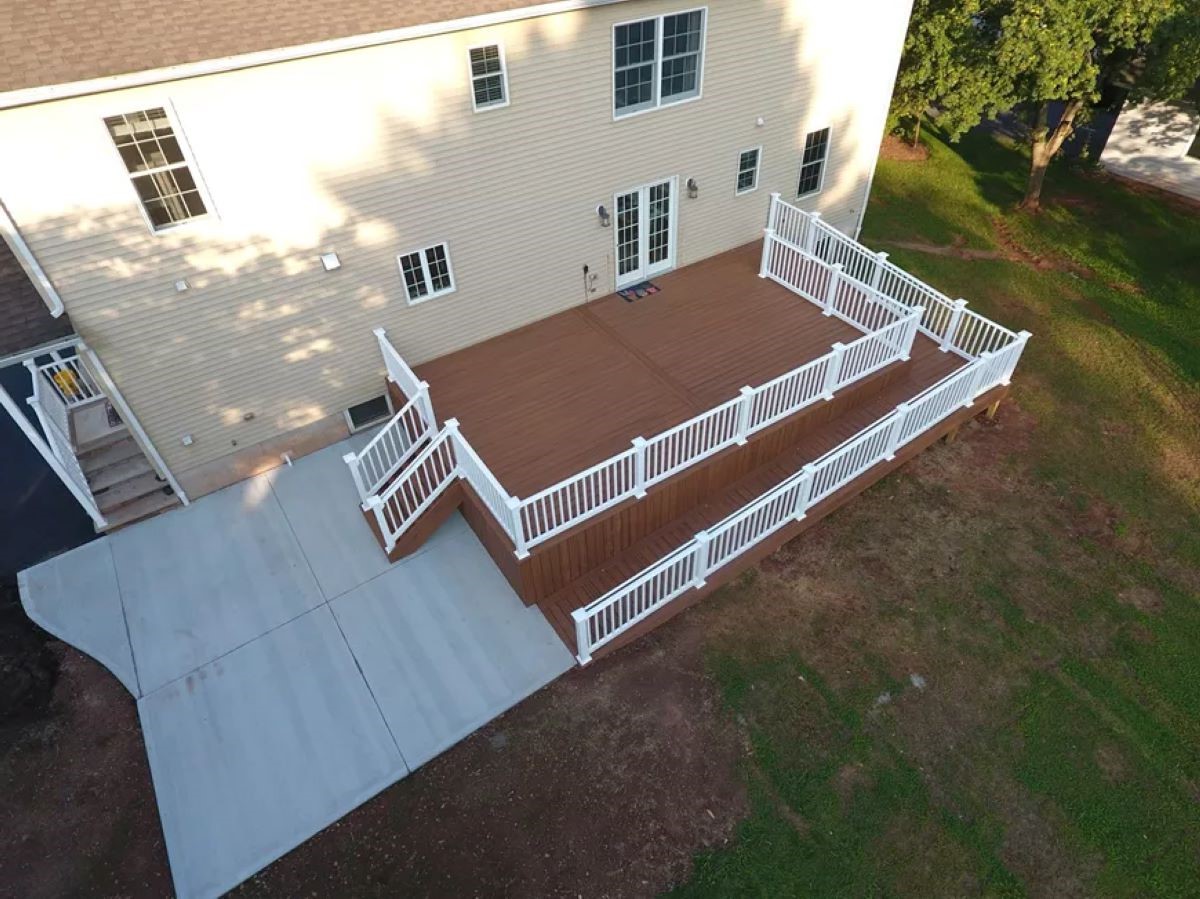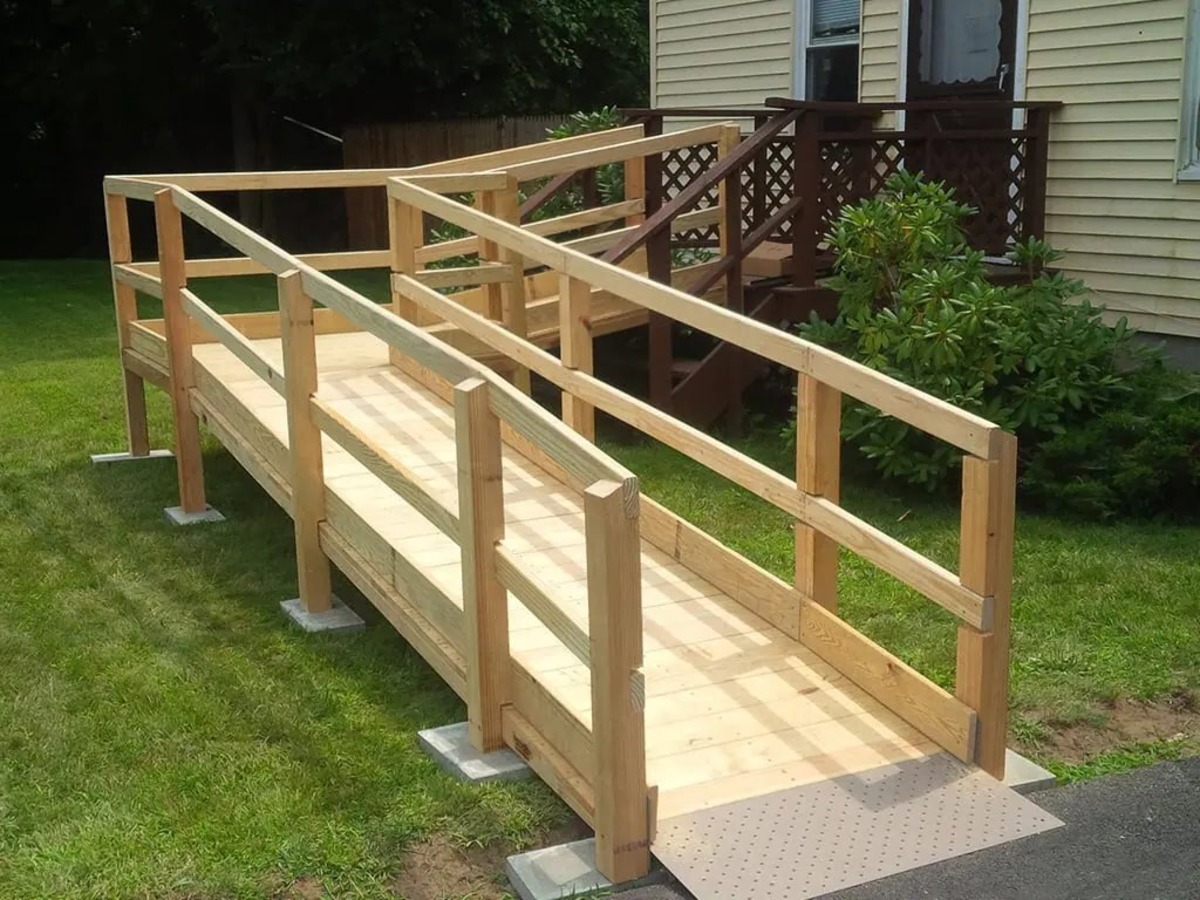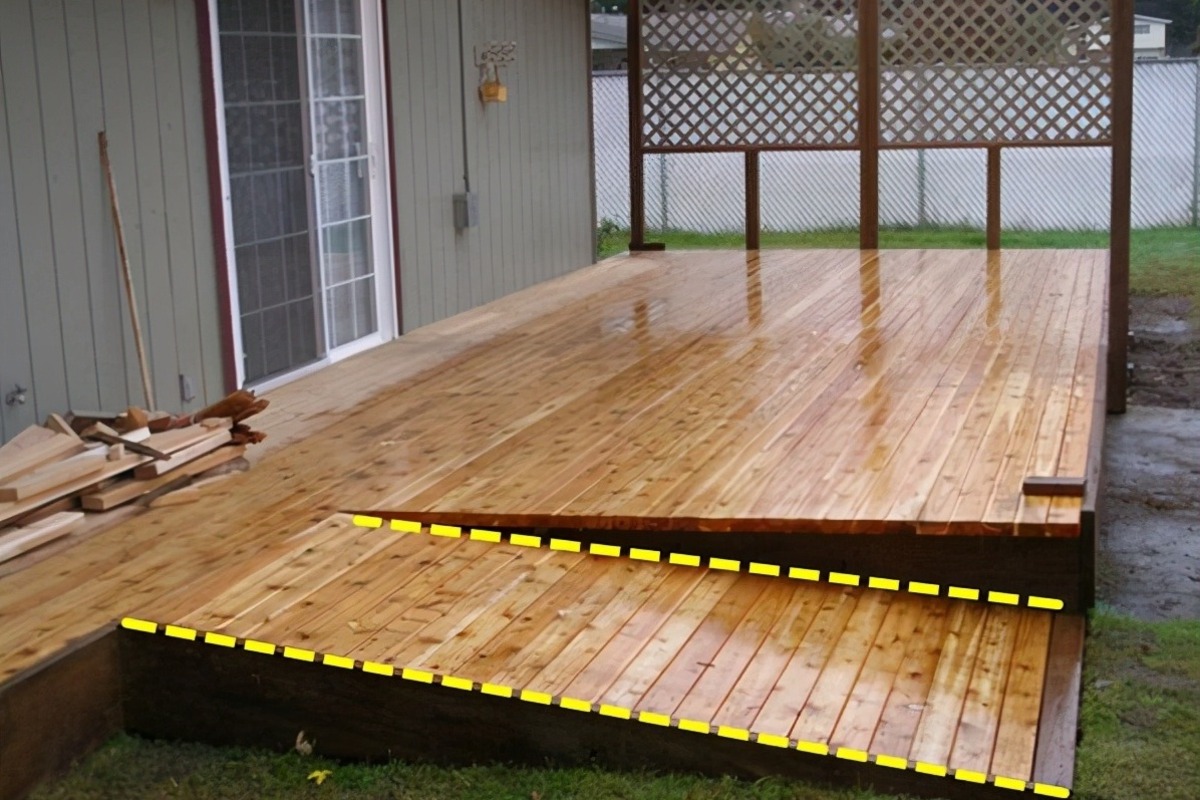Home>Create & Decorate>DIY & Crafts>How To Build A Shed Ramp On Uneven Ground
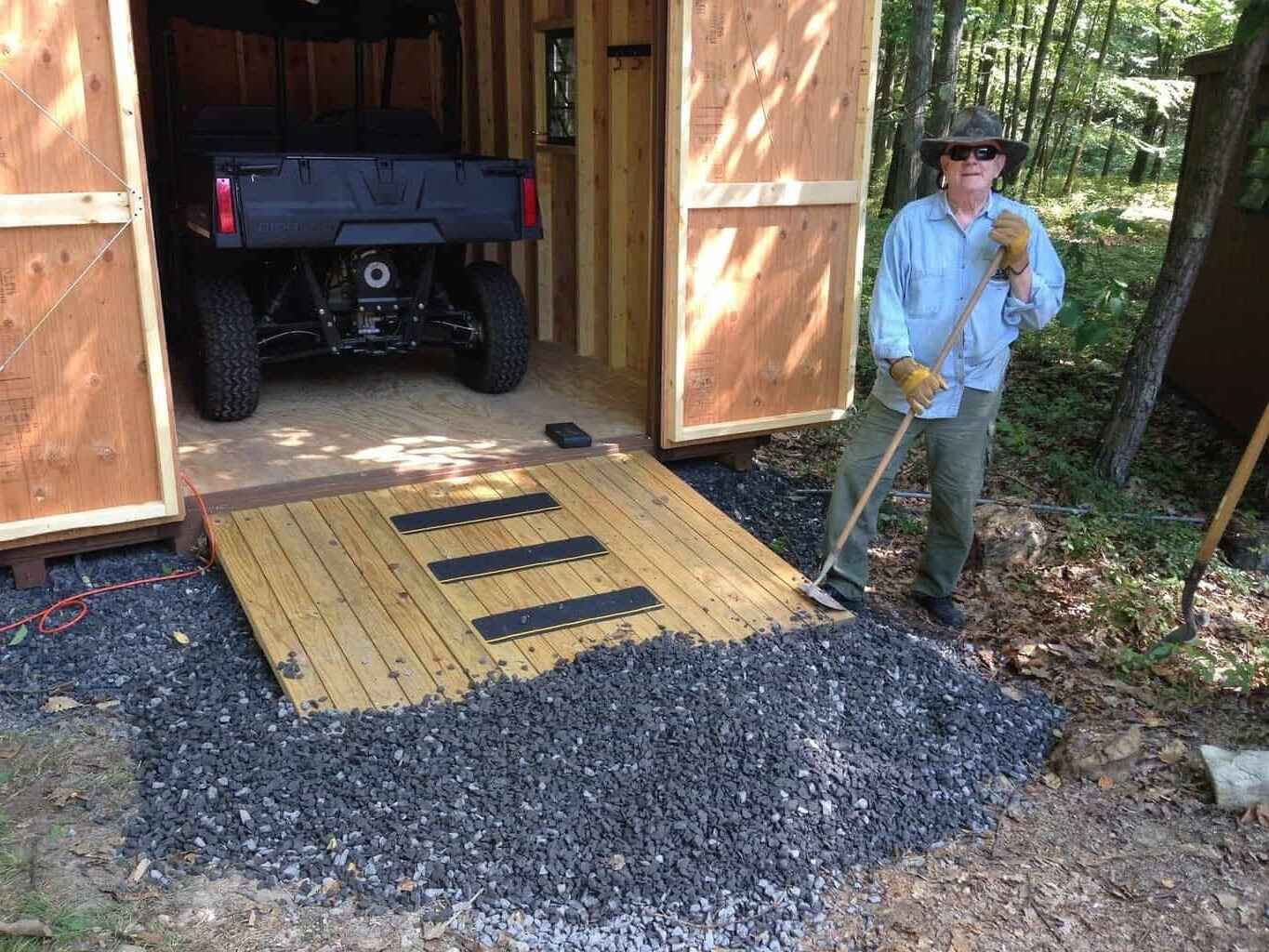

DIY & Crafts
How To Build A Shed Ramp On Uneven Ground
Published: February 27, 2024

Content Creator specializing in woodworking and interior transformations. Caegan's guides motivate readers to undertake their own projects, while his custom furniture adds a personal touch.
Learn how to build a shed ramp on uneven ground with this DIY guide. Perfect for DIY & Crafts enthusiasts looking for practical solutions.
(Many of the links in this article redirect to a specific reviewed product. Your purchase of these products through affiliate links helps to generate commission for Twigandthistle.com, at no extra cost. Learn more)
Introduction
Building a shed ramp on uneven ground can be a challenging yet rewarding DIY project. Whether you're a seasoned DIY enthusiast or a novice looking to expand your skills, constructing a shed ramp is a practical and valuable addition to your outdoor space. This project not only enhances accessibility to your shed but also provides a sense of accomplishment as you tackle the uneven terrain with ingenuity and resourcefulness.
In this comprehensive guide, we will walk through the step-by-step process of building a sturdy and functional shed ramp on uneven ground. From assessing the ground to gathering materials and tools, constructing the frame, and adding finishing touches, each stage is crucial in ensuring the ramp's durability and safety.
By the end of this guide, you will have the knowledge and confidence to embark on this project, transforming the way you access your shed and making it easier to transport heavy equipment, tools, and supplies. So, roll up your sleeves, gather your tools, and let's dive into the rewarding journey of building a shed ramp on uneven ground.
Assessing the Ground
Before diving into the construction process, it's crucial to thoroughly assess the ground where the shed ramp will be built. Uneven terrain presents unique challenges that require careful consideration and planning. Here's how to assess the ground effectively:
-
Survey the Terrain: Begin by surveying the area where the shed ramp will be located. Take note of any slopes, bumps, or irregularities in the ground. Use a long, straight board or a level to identify the high and low points, ensuring you have a clear understanding of the terrain's topography.
-
Measure the Slope: Using a measuring tape and a level, determine the degree of slope present on the ground. This measurement will be essential in designing a ramp that accommodates the slope while providing a safe and gradual incline for easy access to the shed.
-
Identify Obstacles: Look for any obstacles such as rocks, tree roots, or debris that may impede the construction process or pose a hazard once the ramp is in use. Clearing these obstacles will create a smoother and safer foundation for the ramp.
-
Consider Drainage: Evaluate the drainage patterns in the area to prevent water accumulation under the ramp. Proper drainage is essential for preserving the ramp's structural integrity and preventing water-related damage over time.
-
Soil Composition: Assess the soil composition to determine its stability and load-bearing capacity. Different soil types may require specific considerations during the construction process to ensure the ramp's stability and longevity.
-
Accessibility: Take into account the accessibility of the area for transporting materials and equipment needed for the construction. Clear pathways and ensure that the construction site is easily reachable to streamline the building process.
By meticulously assessing the ground, you'll gain valuable insights that will inform the design and construction of the shed ramp. This preparatory phase sets the foundation for a well-planned and structurally sound ramp that effectively addresses the challenges posed by uneven terrain.
Gathering Materials and Tools
Gathering the necessary materials and tools is a pivotal step in preparing for the construction of a shed ramp on uneven ground. By ensuring that you have all the required items at your disposal, you can streamline the building process and minimize interruptions. Here's a comprehensive list of materials and tools needed for this project:
Materials:
- Pressure-Treated Lumber: Select high-quality pressure-treated lumber for the ramp's frame and decking. The dimensions will depend on the ramp's size and the slope of the terrain.
- Plywood or Decking Boards: Choose plywood or decking boards to create a sturdy and slip-resistant surface for the ramp.
- Galvanized Screws and Nails: Opt for corrosion-resistant screws and nails to secure the structural components and decking in place.
- Gravel or Crushed Stone: Use gravel or crushed stone for creating a stable base and promoting proper drainage beneath the ramp.
- Metal Brackets and Anchors: These will be essential for reinforcing the frame and securing the ramp to the shed.
- Concrete Blocks or Pavers: If the ground is particularly uneven, concrete blocks or pavers can be used to create a level foundation for the ramp.
Tools:
- Circular Saw: A circular saw will be indispensable for cutting lumber to the required dimensions, ensuring precise and clean cuts.
- Power Drill: Choose a reliable power drill equipped with the appropriate drill bits for driving screws and creating pilot holes.
- Level: A level is essential for ensuring that the ramp's frame and surface are even and properly aligned with the ground.
- Shovel and Rake: These tools will aid in preparing the ground, leveling the surface, and creating a stable foundation for the ramp.
- Measuring Tape and Carpenter's Square: Accurate measurements and angles are crucial in constructing a well-built ramp, making these tools indispensable.
- Safety Gear: Prioritize safety by wearing protective gear, including gloves, safety goggles, and a dust mask, especially when cutting and handling lumber.
By procuring these materials and tools, you'll be well-equipped to embark on the construction process with confidence and efficiency. Additionally, ensuring that the materials are of high quality and the tools are in good working condition will contribute to the overall success and durability of the shed ramp.
Read more: How To Build A Ramp For A Shed
Building the Frame
The construction of the frame forms the backbone of the shed ramp, providing structural support and stability. Building a robust frame is essential for withstanding the weight of heavy equipment and ensuring the ramp's longevity. Here's a detailed breakdown of the steps involved in building the frame for a shed ramp on uneven ground:
-
Cutting the Lumber: Begin by cutting the pressure-treated lumber to the required dimensions using a circular saw. The dimensions will be determined by the size of the ramp and the slope of the terrain. It's crucial to ensure precise cuts to facilitate a seamless assembly process.
-
Assembling the Joists: Construct the frame's joists by arranging the cut lumber in a parallel formation, maintaining uniform spacing between each joist. The joists serve as the primary support structure for the ramp, distributing the load evenly and enhancing its overall strength.
-
Adding Cross Bracing: To reinforce the frame and prevent lateral movement, install cross braces between the joists. These braces enhance the frame's rigidity, minimizing the risk of sagging or shifting over time.
-
Securing the Frame: Use galvanized screws and nails to securely fasten the joists and cross braces, ensuring a tight and stable frame. It's essential to drive the fasteners at regular intervals to create a strong bond between the components.
-
Leveling the Frame: Utilize a level to ensure that the frame is perfectly level and aligned with the ground. This step is crucial for guaranteeing a smooth transition from the ground to the ramp, enhancing accessibility and safety.
-
Reinforcing the Connections: Strengthen the connections within the frame by using metal brackets and anchors. These reinforcements add an extra layer of stability, particularly in areas where the ground is uneven, minimizing the risk of structural weaknesses.
-
Creating the Ramp's Support Base: If the ground exhibits significant irregularities, consider using concrete blocks or pavers to create a level and stable base for the ramp. This additional support base enhances the frame's stability and ensures uniform weight distribution.
By meticulously following these steps, you'll establish a sturdy and well-constructed frame that forms the foundation of the shed ramp. The frame's structural integrity is paramount in ensuring the ramp's functionality and durability, making it a critical phase in the overall construction process.
Attaching the Ramp to the Shed
Attaching the shed ramp to the main structure is a pivotal step that ensures stability, seamless integration, and long-term functionality. Proper attachment not only enhances the overall aesthetics but also reinforces the structural integrity of the ramp. Here's a detailed guide on how to effectively attach the ramp to the shed:
Positioning and Alignment
Begin by positioning the ramp against the shed, ensuring that it aligns seamlessly with the entry point. The alignment is crucial for creating a smooth transition between the ramp and the shed, facilitating easy access and movement of equipment and supplies.
Securing the Connection
Using durable galvanized screws and appropriate anchors, secure the ramp to the shed's exterior wall. It's essential to drive the screws into the wall studs for maximum stability and load-bearing capacity. This secure attachment prevents any shifting or movement of the ramp, especially when heavy loads are being transported.
Read more: How To Build A Shed Ramp With Pavers
Flashing Installation
To prevent water infiltration and protect the connection point from moisture-related damage, install flashing along the joint between the ramp and the shed. Properly installed flashing acts as a barrier, directing water away from the connection and safeguarding the structural elements from potential water damage.
Sealing the Gaps
Carefully seal any gaps or joints between the ramp and the shed using a high-quality exterior caulk. This additional step further fortifies the connection, creating a weather-resistant barrier that prevents water penetration and minimizes the risk of moisture-related issues over time.
Reinforcement for Stability
For added stability, consider installing diagonal braces between the ramp and the shed. These braces provide lateral support, minimizing any potential swaying or movement of the ramp. Additionally, they contribute to the overall rigidity of the structure, ensuring a secure and durable attachment to the shed.
Finishing Touches
Once the ramp is securely attached to the shed, inspect the entire connection to ensure that it is structurally sound and aesthetically pleasing. Make any necessary adjustments and perform a final check to verify the stability and alignment of the ramp with the shed.
By following these steps, you'll effectively attach the shed ramp to the main structure, creating a seamless and durable connection that enhances accessibility and functionality. This crucial phase ensures that the shed ramp becomes an integral and reliable feature of your outdoor space, providing convenient access and enhancing the overall usability of the shed.
Finishing Touches and Safety Measures
As the construction of the shed ramp on uneven ground nears completion, attention to finishing touches and safety measures is paramount to ensure the functionality, longevity, and safety of the structure. This phase encompasses essential steps that add both aesthetic appeal and crucial safety enhancements to the ramp.
Surface Treatment
To enhance the durability and slip resistance of the ramp, consider applying a protective sealant or paint to the surface. This not only adds a polished look to the ramp but also provides a protective barrier against moisture, UV exposure, and general wear and tear. Additionally, incorporating non-slip additives into the sealant or paint can significantly improve traction, especially during inclement weather or when the ramp is exposed to moisture.
Edge Guard Installation
Installing edge guards along the sides of the ramp serves as a preventive measure against accidental slippage or tripping. These guards can be constructed using pressure-treated lumber or metal edging, providing a visible and tactile boundary that enhances safety, particularly for individuals with mobility challenges or when transporting heavy items up and down the ramp.
Handrail Addition
For elevated ramps or situations where additional support is beneficial, consider adding a handrail along one or both sides of the ramp. The handrail provides stability and reassurance, particularly for individuals with limited mobility or when navigating the ramp with bulky items. When installing a handrail, ensure that it complies with local building codes and accessibility standards for optimal safety and usability.
Read more: How To Build A Deck On The Ground
Lighting Integration
Incorporating lighting along the ramp enhances visibility during low-light conditions, such as evenings or overcast days. Solar-powered or low-voltage LED lights can be strategically placed to illuminate the pathway, ensuring safe and secure access to the shed at any time of day. Properly positioned lighting also contributes to the overall security of the outdoor space.
Anti-Skid Tread Application
Applying anti-skid treads to the ramp surface further enhances traction and minimizes the risk of slipping, especially in wet or icy conditions. These adhesive treads are easy to install and provide an additional layer of safety, making the ramp more user-friendly and secure for all individuals accessing the shed.
Regular Maintenance Plan
Implementing a regular maintenance plan is essential for preserving the ramp's structural integrity and safety features. Periodic inspections, cleaning, and minor repairs, such as tightening fasteners and replacing worn treads, contribute to the long-term functionality and safety of the ramp.
By incorporating these finishing touches and safety measures, the shed ramp on uneven ground not only becomes a visually appealing and seamlessly integrated feature but also prioritizes the safety and accessibility of individuals using the ramp. These enhancements elevate the overall user experience and ensure that the ramp remains a reliable and enduring asset in your outdoor space.

